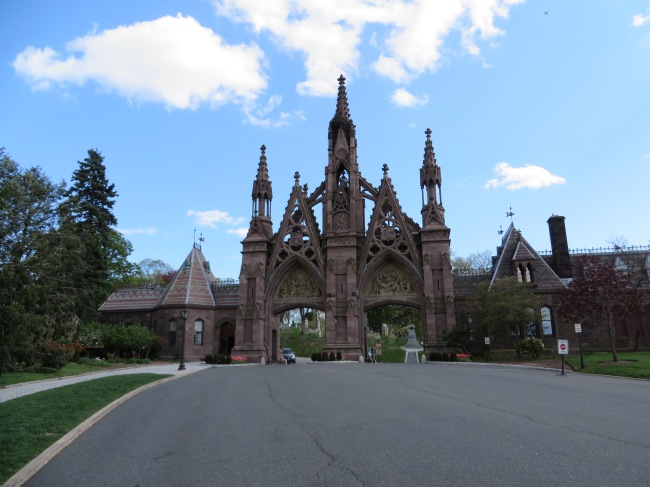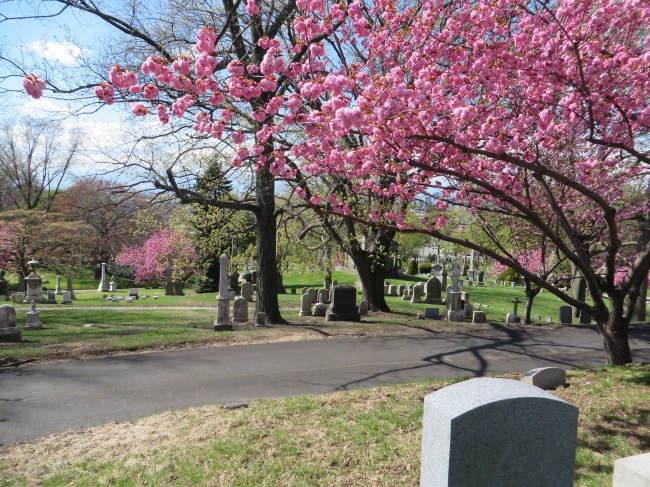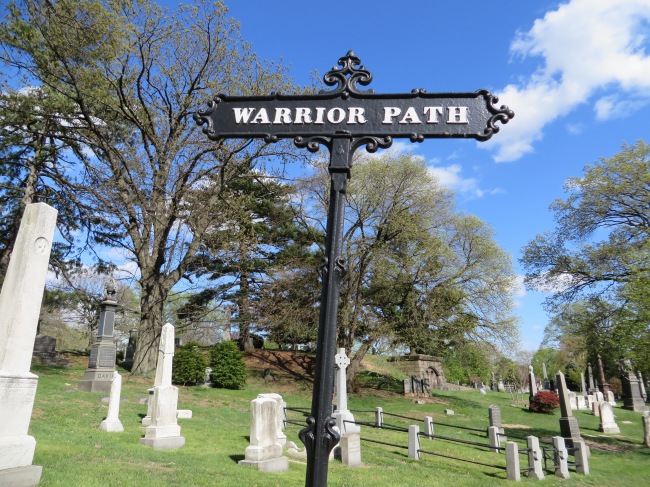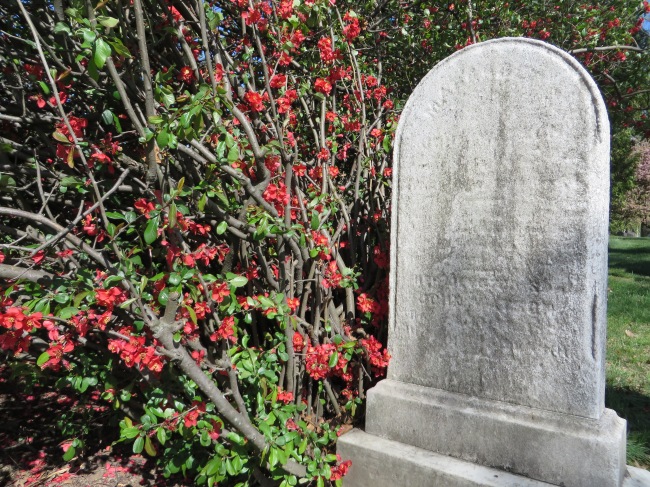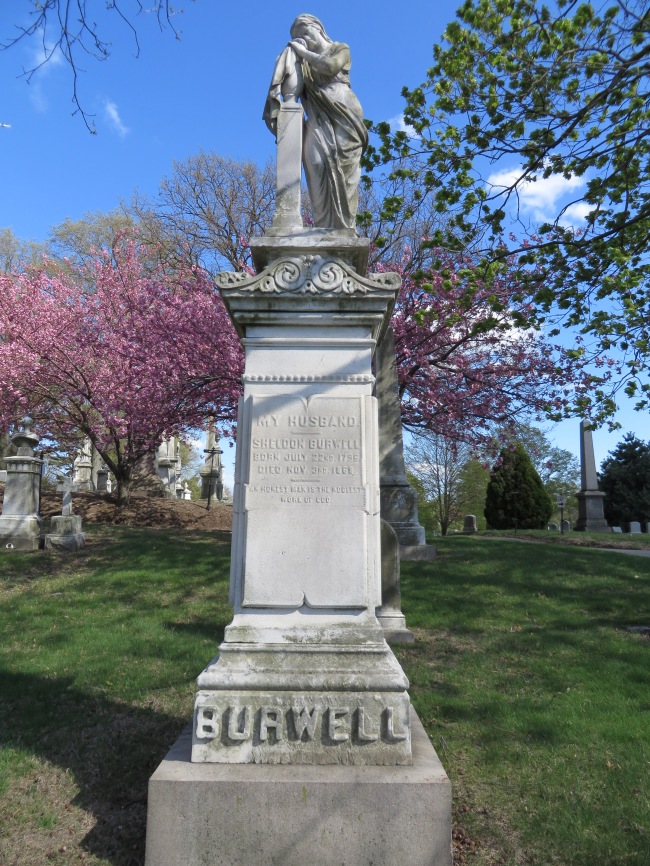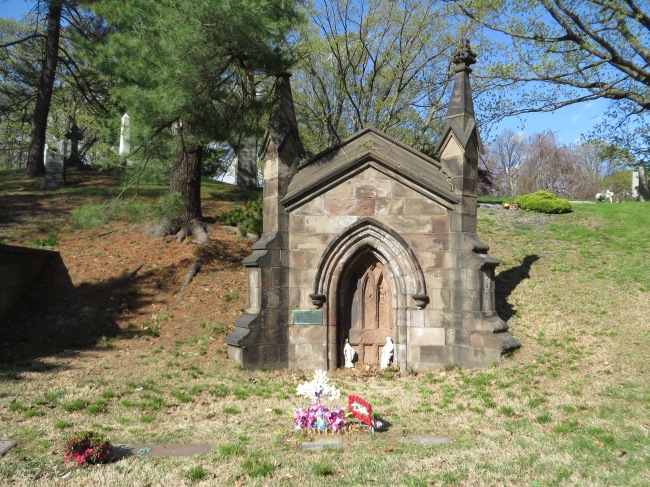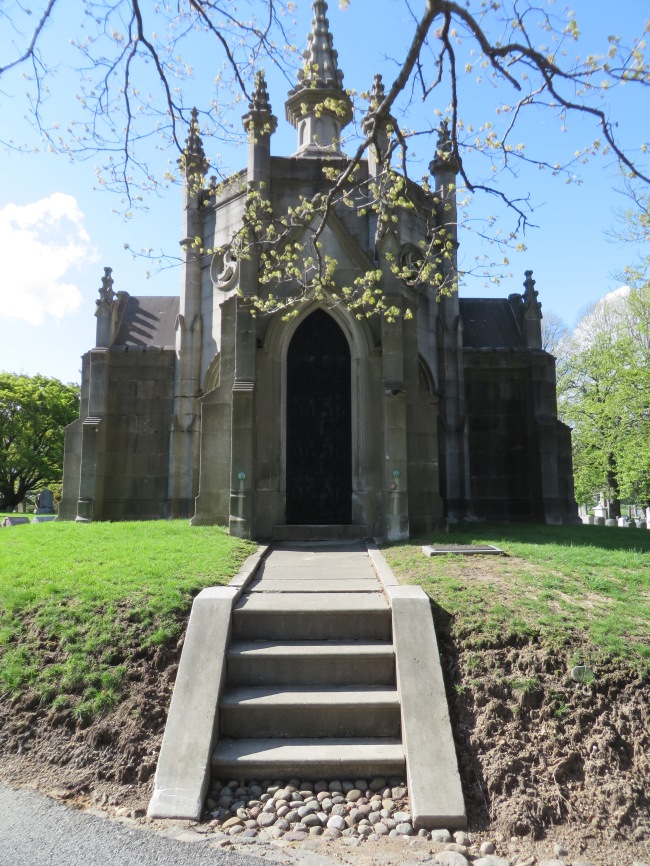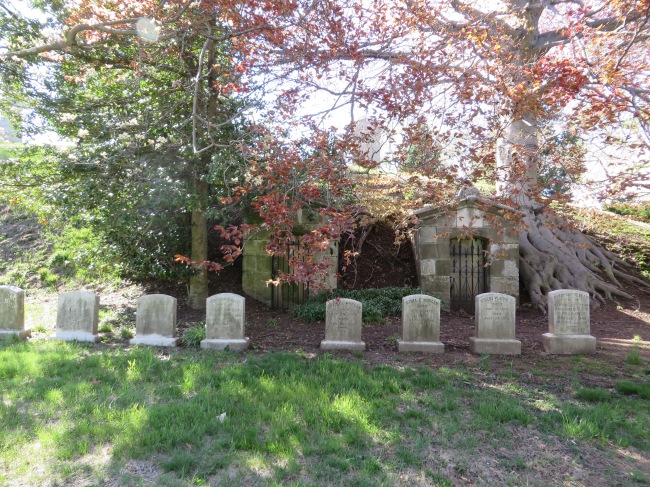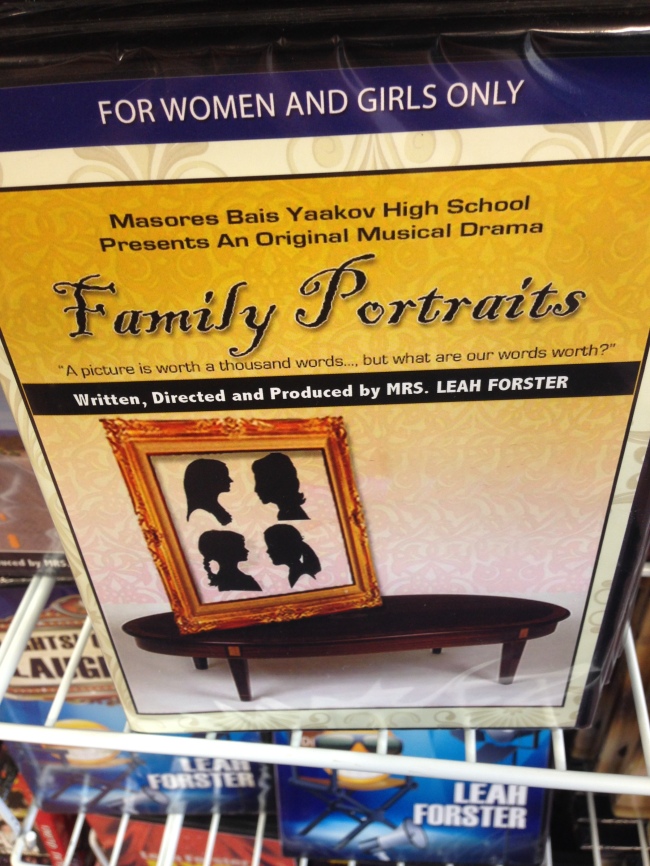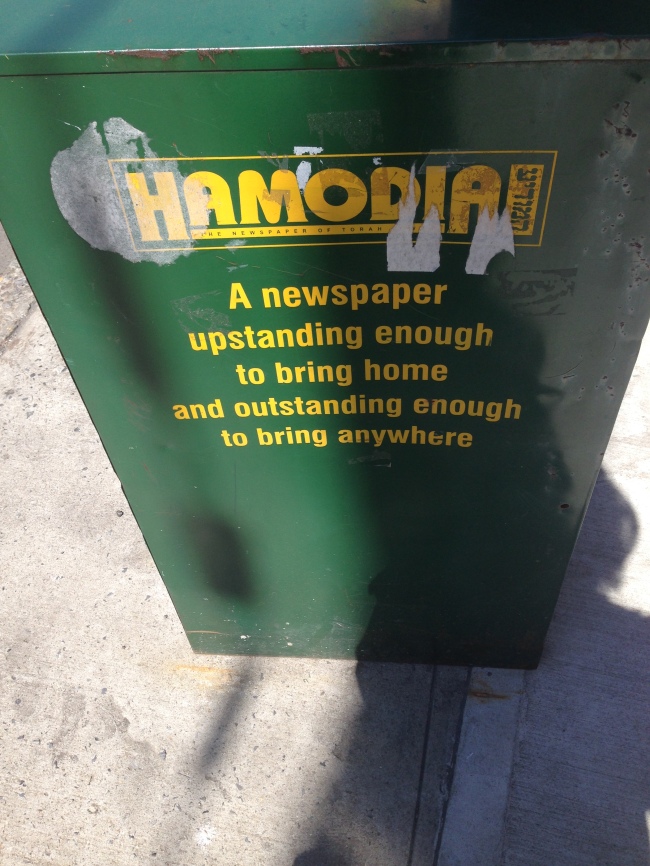Under the heading of unexpected new experiences, today I got locked in a graveyard and had to scale an iron fence. But… that was not my goal. The goal was to view Brooklyn’s landmark Green-wood (yes, with the hyphen) Cemetery, which greets visitors thusly:
Founded in 1838, Green-wood is a sprawling landscape of greenery, mausoleums, statues and history. Expansive and peaceful, it’s a beautiful spot for reflection, remembrance and rest. It’s hard to believe that across the street from the entry gate is a gas station, and that a subway and convenience store are just one avenue over.
In 1776, the Battle of Long Island was fought on the grounds of what is now the cemetery, and some of the pathways have names like Battle Avenue and Warrior Path, while others are named for flowers. The website boasts famous “residents,” including Leonard Bernstein and Jean-Michel Basquiat, though the only name I recognized was Cooper-Hewitt, as in the design museum.
There was a obelisk monument for Louis Board, who lived a miserly life, and left a large fortune to the American Society for the Prevention of Cruelty to Animals. “His benevolence and humanity were universal,” reads the epitaph.
A monument stands over the remains of 103 of the 278 people burned to death in the Brooklyn Theatre Fire of 1876.
The grave of Ted Morello, a longtime reporter for the Associated Press of Pakistan and one of the first members of the U.N. Correspondents’ Association, reads: “Journalist, Husband, Father, Brother, Friend.” His epitaph: “‘Tis not too late to seek a newer world,” from Tennyson’s “Ulysses.”
There was a barely noticeable lone marker beneath a tree bearing the name Henry W. Holly. It struck me because my name is Holly and I was named for my grandfather, Henry.
Some of the stones are so old, the inscriptions are worn down beyond recognition. There are generations of families, people old and young. Those are the saddest, of course, the people who died before they really had a chance to live, young soldiers and children. One small white stone reads only “Baby Amy.”
It was very interesting to see how — and I don’t care for this this term, so apologies — patriarchal some of the gravestones were. Not that I’m shocked by this fact. Remember, Green-wood goes back to the 1830’s, before feminism was officially invented. Many of the spots where women were buried read “wife of…” or even “Catherine, his wife,” if a husband died first. Meanwhile, there were more than a few monuments to men that were inscribed “my husband.” There was a distinctly greater sense of women mourning men than the other way around.
An expanse of green was dotted with small stones, different from the larger, more ornate structures throughout the space. Some of the headstones had been visited recently, for Easter, and were decorated with flowers, stones and trinkets. Atop the grave of a 20-year-old boy was a small toy firetruck.
The stonework and statuary was just beautiful. There were two memorials built into a small hillside, next to a tree with long, gnarled roots, behind a row of small gravestones. There was a large mausoleum that resembled a castle, and another that reminded me of a Hobbit church.
Morbid though it might seem, I’ve long had a affinity for cemeteries. I spent many hours as a girl sitting on the steps of a mausoleum in the Druid Ridge Cemetery across the road from my grandparents’ house in Baltimore. I marveled at the Cimitero delle Porte Sante in Florence, and visited the graves of Louisa May Alcott, Ralph Waldo Emerson and Henry David Thoreau at the Sleepy Hollow Cemetery in Concord, Mass. My favorite cemetery of all time (yes, I have a favorite cemetery) is in Amherst, Mass., and I don’t recall the name of it. I spent a summer there when I was 16, and I passed hours among the thin and crumbling gravestones.
I’ve never given much thought to why I like cemeteries so much, but if I had to elucidate it, I’d say there are two things that appeal to me: First, cemeteries have always been very peaceful places to me, perhaps because they are final resting spots. It’s a platitude of sorts to say “he is at peace,” but there’s a sense of truth there as well. To me, cemeteries don’t typically have a sense of struggle or anxiety. And second, just imagine all the stories beneath your feet.
Now that all being said, I don’t want to be trapped in a cemetery. The sign said the gate locks at 5 p.m. So at 4:45, I began to head back toward the entrance, but as anyone who has ever met me knows, I have an abysmal sense of direction. And Green-wood is 478 acres. So with four minutes to spare, I found myself at the back gate… which closed at 4. Awesome, right?
There was no way in Hell I could make it to the main gate by 5. And the sign read: “If you get locked in, wait for the caretaker,” or something to that extent. Pop quiz: How often do you think the caretaker comes around after hours on a Sunday? Yeah, me too.
So I called up my monkey ancestry (yes, I know, apes and monkeys are different, and no offense to the Creationists), and climbed over the fence (ballpark 10 feet), which landed me about a half-mile from where I’d started.
And here’s the bitch of it all. When I finally did get back to the main entrance, five streets and three avenues from where I’d exited, guess what was open? That’s right, the main gate. The one with the sign that claims to close at 5.
So I uttered some not-nice words and chalked it up to adventure.
